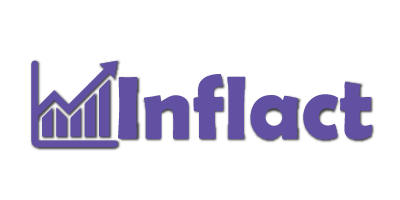In today’s fast-evolving work landscape—where hybrid models, remote teams, and digital transformation are the new norm—businesses are under more pressure than ever to remain productive, efficient, and compliant. Enter Employee Monitoring Software, a powerful tool designed to help organizations manage workforce performance, ensure data security, and streamline operations.
Whether your company is scaling fast or simply looking to optimize its existing workflow, the right Employee Monitoring tool can provide real-time visibility into how time is spent, allowing you to make smarter business decisions while promoting accountability and transparency.
What Is Employee Monitoring Software?
Employee Monitoring Software is a digital solution that tracks employee activity during work hours. From logging hours and capturing screen activity to analyzing app and website usage, this software provides managers with valuable insights into daily operations. It plays a critical role in helping businesses of all sizes improve productivity, detect inefficiencies, and ensure regulatory compliance.
In a post-pandemic world where many employees work remotely or in hybrid settings, monitoring tools have become indispensable for maintaining operational oversight. But far from being about surveillance, today’s software is designed to foster trust and performance through data-driven transparency.
Businesses are increasingly turning to employee computer monitoring software as a reliable solution to manage digital workflows, ensure data security, and track productivity across all types of work environments.
Key Features of a Modern Employee Monitoring Tool
The core strength of any Employee Monitoring tool lies in its ability to deliver actionable information. Below are several key features that are frequently found in top-tier solutions:
- Time Tracking: Captures the duration employees spend on individual tasks, assignments, and rest periods. Useful for both payroll and productivity analysis.
- Screen Monitoring: Takes periodic screenshots or provides live views of screens to ensure employees are focused on work-related tasks.
- Activity Logging: Records keyboard and mouse usage, app activity, and website visits, distinguishing between productive and non-productive behaviors.
- Automated Reporting: Generates daily, weekly, or custom reports summarizing performance metrics, helping managers make informed decisions without micromanaging.
When used responsibly, these features help organizations not only understand employee behavior but also improve workload distribution, team collaboration, and output quality.
Benefits of Employee Monitoring Software
The benefits of using Employee Monitoring Software go beyond oversight. They extend into performance enhancement, cost savings, and workforce satisfaction. Here’s how:
- Increased Productivity: Monitoring helps identify time-wasting habits or bottlenecks, enabling quick course corrections.
- Reduced Operational Costs: With detailed time and task tracking, businesses can optimize resource allocation and eliminate inefficiencies.
- Improved Remote Work Management: Remote employees often work independently; monitoring tools ensure they stay aligned with company goals.
- Data-Driven Recognition: By identifying top performers based on real metrics, companies can reward efforts and foster a positive work culture.
- Employee Accountability: When workers know their performance is being monitored, they tend to stay focused and meet deadlines more consistently.
Rather than stifling employees, transparent use of these tools can empower them to take ownership of their work and track their own progress.
Compliance and Privacy in Employee Monitoring
One of the most debated aspects of monitoring tools is their impact on employee privacy. However, when implemented correctly, Employee Monitoring Software can fully comply with data protection laws such as GDPR, HIPAA, and CCPA.
Key compliance practices include:
- Transparency: Informing employees about what is being monitored and why.
- Data Security: Encrypting sensitive data collected by the software.
- Consent and Policies: Ensuring all parties are aware of their rights and responsibilities through clear policies and, where necessary, written consent.
- Purpose Limitation: Monitoring only during work hours and only collecting data that serves a legitimate business interest.
It’s crucial for organizations to maintain a respectful balance between monitoring productivity and upholding employee privacy. Ethical deployment of monitoring tools is not just a best practice—it’s a legal and moral obligation.
Use Cases Across Industries
Different industries apply Employee Monitoring Software in unique ways, depending on their operational needs:
- IT and Software Development: Track project timelines, code check-ins, and team collaboration.
- Customer Service: Measure response times, call handling, and support resolution efficiency.
- Remote Freelancers or Consultants: Log work hours and task completion to ensure accurate billing and client transparency.
- Healthcare and Legal Firms: Protect sensitive information by monitoring document access and preventing data breaches.
- Construction and Field Teams: Use GPS and time tracking features to verify on-site attendance and task completion.
These tools have proven especially useful in remote work settings, where traditional managerial oversight is limited.
Choosing the Right Employee Monitoring Software
With a wide array of options in the market, selecting the ideal Employee Monitoring Software depends on your specific business needs.
Whether you’re a startup or an established enterprise, choosing the right employee computer monitoring software means considering usability, compliance features, and compatibility with your existing tech stack to ensure long-term value.
- Scalability: Can the software grow with your business? Look for tools that offer flexible plans and multi-tier support.
- Integrations: The best solutions connect seamlessly with your current workflow tools like Slack, Trello, Jira, or Microsoft Teams.
- Ease of Use: A clean, intuitive dashboard can significantly reduce training time and increase adoption.
- Customization: Choose a tool that lets you set user permissions, schedule reports, and define productivity parameters.
- Customer Support and Security: Make sure the vendor offers responsive support and robust data security features, such as two-factor authentication and encryption.
Conducting a pilot test or free trial can also help you determine the right fit without long-term commitments.
Best Practices for Implementing an Employee Monitoring Tool
Rolling out monitoring software effectively is as important as choosing the right one. Consider the following proven strategies to implement the software effectively:
- Open Communication: Explain to employees why monitoring is being introduced and how it will benefit them.
- Set Clear Guidelines: Define what activities will be monitored and ensure this is shared in a policy document.
- Start Small: Implement the software with a single team or department to gather feedback and make improvements.
- Regular Reviews: Periodically review the data and use it to improve workflows, rather than to penalize.
- Respect Boundaries: Avoid intrusive practices like webcam monitoring unless absolutely necessary and legally compliant.
When employees understand the purpose and scope of monitoring, they are more likely to embrace it as a performance aid rather than a surveillance tool.
Future Trends in Employee Monitoring Software
As work continues to evolve, so too does Employee Monitoring Software. Here are some emerging trends:
- AI-Driven Insights: New tools use machine learning to predict burnout, identify peak productivity hours, and suggest workflow optimizations.
- Wellness and Engagement Monitoring: Some platforms now include features to gauge employee well-being, stress levels, and satisfaction.
- Cloud-Based Monitoring: As businesses shift to cloud ecosystems, monitoring software is also moving to web-based platforms for better accessibility and updates.
- Focus on Outcomes vs. Activity: Future tools are likely to emphasize deliverables and quality of work rather than raw screen time.
These innovations reflect a shift from surveillance to support, aiming to make workplaces more adaptive, humane, and data-smart.
Conclusion: Empowering the Future of Work with Employee Monitoring Tools
Employee Monitoring Software is no longer just a management tool—it’s a strategic asset for modern organizations. When implemented ethically and thoughtfully, it enhances productivity, ensures compliance, supports remote work, and fosters trust through transparency.
As the workplace continues to change, embracing a capable Employee Monitoring tool can help businesses stay competitive, informed, and agile. The key lies in using the software not just to observe but to empower—transforming oversight into insight.




